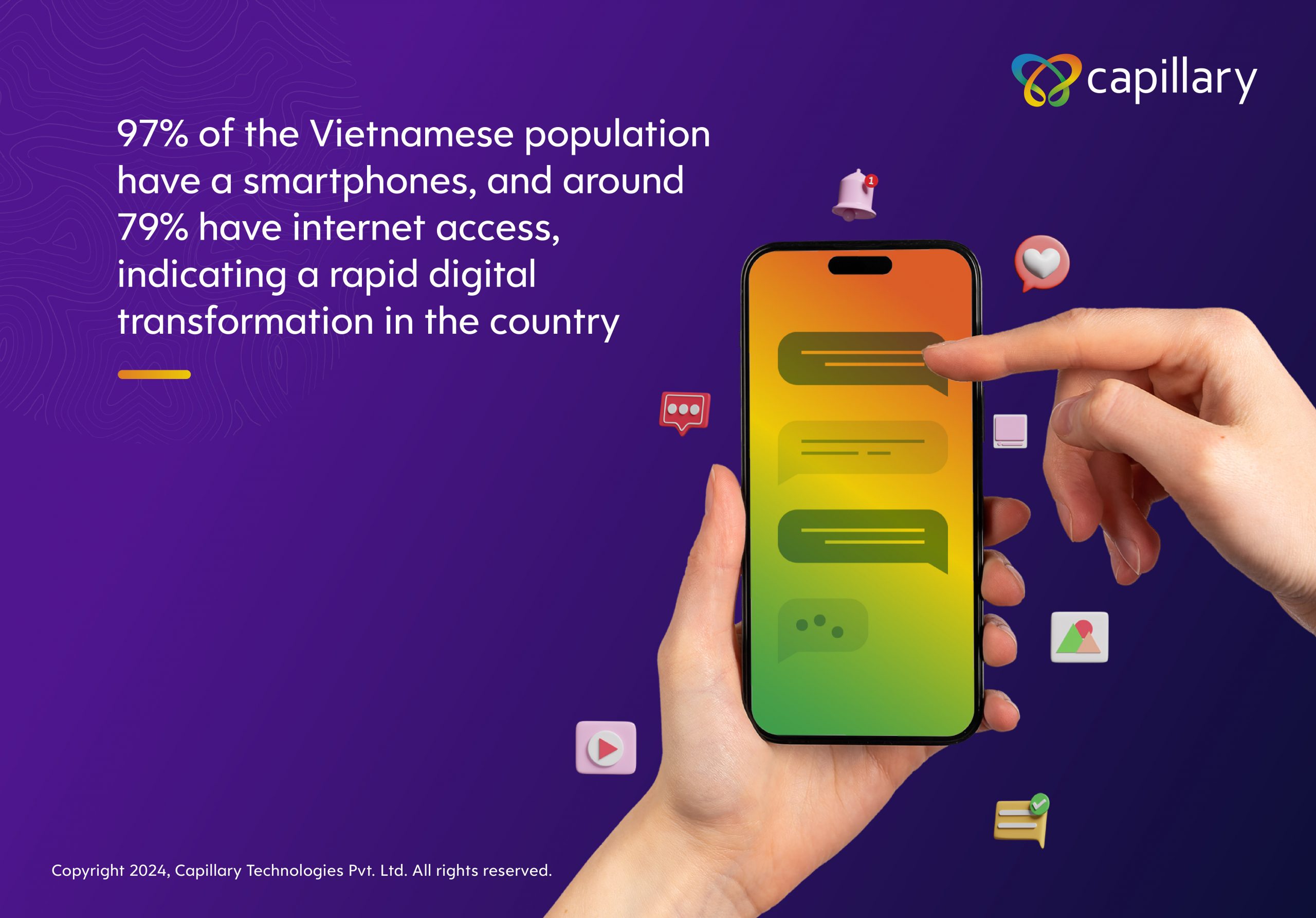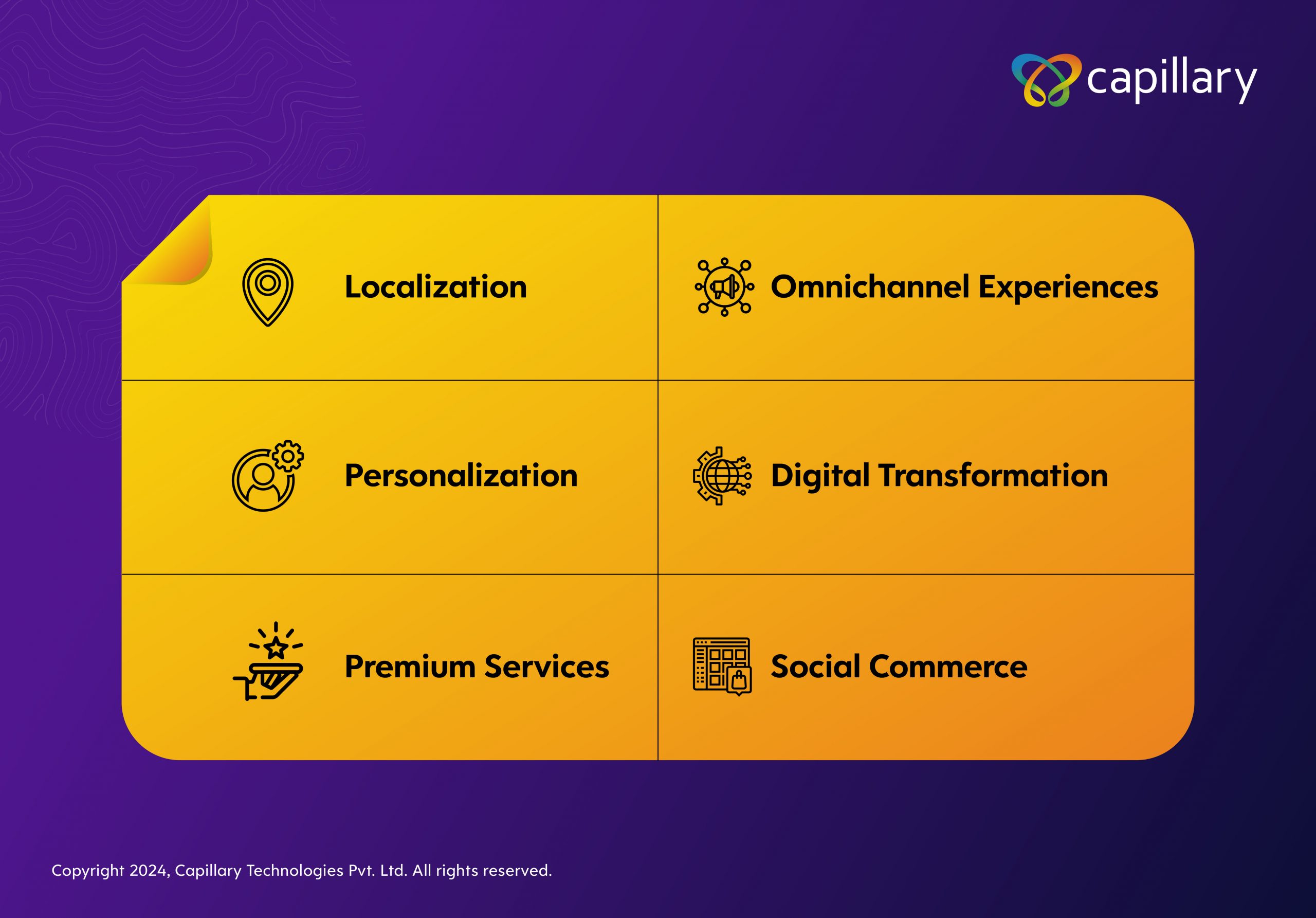أفضل مزودي حلول الولاء في الإمارات العربية المتحدة
في السوق التنافسي لدولة الإمارات العربية المتحدة، يُعد بناء والحفاظ على ولاء العملاء أمرًا حاسمًا للشركات. يلعب مزودو حلول الولاء دورًا حيويًا في مساعدة الشركات على تحقيق هذا الهدف من خلال تقديم أدوات واستراتيجيات مبتكرة. يستعرض هذا المقال أفضل مزودي حلول الولاء في الإمارات العربية المتحدة، مع تسليط الضوء على ميزاتهم وخدماتهم الفريدة.
أفضل مزودي حلول الولاء في الإمارات العربية المتحدة
1. Capillary Technologies
تعتبر Capillary Technologies لاعبًا بارزًا في سوق حلول الولاء، حيث تقدم منصة SaaS شاملة تدمج الرؤى المستندة إلى الذكاء الاصطناعي، والتفاعل عبر القنوات المتعددة، والتحليلات في الوقت الفعلي. حلولها مصممة لمختلف الصناعات بما في ذلك التجزئة، والضيافة، والخدمات المصرفية، مما يجعلها خيارًا متعدد الاستخدامات للشركات التي تسعى لتعزيز ولاء العملاء.
الميزات الرئيسية:
- رؤى العملاء المستندة إلى الذكاء الاصطناعي
- تحليلات في الوقت الفعلي
- تفاعل عبر القنوات المتعددة
- برامج ولاء قابلة للتخصيص
2. Nexxus Group
تقدم Nexxus Group حلول ولاء متقدمة تركز على تجارب العملاء الشخصية. تتضمن منصتها ميزات مثل مكافآت النقاط، العضوية المتدرجة، والحملات التسويقية المستهدفة. تُعرف حلول Nexxus Group بمرونتها وقابليتها للتوسع، مما يجعلها مناسبة للشركات من جميع الأحجام.
الميزات الرئيسية:
- برامج مكافآت مخصصة
- أنظمة عضوية متدرجة
- حملات تسويقية مستهدفة
- حلول مرنة وقابلة للتوسع
3. Keleido
تعد Keleido مزودًا رائدًا لحلول الولاء في الإمارات، وتقدم مجموعة من الخدمات من تصميم برامج الولاء إلى التنفيذ والإدارة. تركز منصتها على تفاعل العملاء من خلال التلعيب، وتكامل وسائل التواصل الاجتماعي، وتحسين الأجهزة المحمولة.
الميزات الرئيسية:
- عناصر التلعيب
- تكامل وسائل التواصل الاجتماعي
- حلول محسنة للأجهزة المحمولة
- إدارة شاملة للبرامج
4. Annex Cloud
تقدم Annex Cloud مجموعة شاملة من حلول الولاء، بما في ذلك التسويق بالإحالة، والمحتوى الذي ينشئه المستخدمون، والتفاعل عبر وسائل التواصل الاجتماعي. تساعد منصتها الشركات على بناء مجتمعات قوية حول علاماتها التجارية، وتعزيز ولاء العملاء من خلال وسائل تفاعلية ومشاركة متنوعة.
الميزات الرئيسية:
- التسويق بالإحالة
- المحتوى الذي ينشئه المستخدمون
- التفاعل عبر وسائل التواصل الاجتماعي
- أدوات بناء المجتمع
5. Incent Loyalty
تركز Incent Loyalty على إنشاء برامج ولاء مخصصة تلبي الاحتياجات الفريدة لكل شركة. تتضمن حلولها بطاقات ولاء رقمية، أنظمة تعتمد على النقاط، وتكامل ملاحظات العملاء في الوقت الفعلي، مما يساعد الشركات على الحفاظ على مستويات عالية من رضا العملاء وتفاعلهم.
الميزات الرئيسية:
- بطاقات ولاء رقمية
- أنظمة تعتمد على النقاط
- ملاحظات العملاء في الوقت الفعلي
- تصميم برامج مخصصة
6. Loyalty Juggernaut
تقدم Loyalty Juggernaut منصة ولاء قوية مصممة لإنشاء برامج ولاء متطورة وقابلة للتوسع. تتضمن حلولها تحليلات شاملة للعملاء، وأدوات تفاعل في الوقت الفعلي، وتكامل سلس مع الأنظمة القائمة، مما يجعلها مثالية للشركات التي تسعى لإستراتيجية ولاء قوية.
الميزات الرئيسية:
- تحليلات شاملة للعملاء
- أدوات تفاعل في الوقت الفعلي
- تكامل سلس مع الأنظمة
- برامج ولاء قابلة للتوسع
7. Comarch
تعتبر Comarch مزودًا عالميًا لحلول تقنية المعلومات، بما في ذلك منصات إدارة الولاء المتقدمة. تم تصميم حلولها للشركات الكبرى وتوفر خيارات تخصيص واسعة، وتحليلات قوية، وتكامل سلس مع الأنظمة القائمة.
الميزات الرئيسية:
- خيارات تخصيص متقدمة
- تحليلات قوية
- تكامل سلس مع الأنظمة
- حلول على مستوى الشركات
الاتجاهات في سوق الولاء في الإمارات
التخصيص وتحليل البيانات
يتوقع المستهلكون في الإمارات تجارب مخصصة. تستفيد الشركات من تحليلات البيانات لفهم تفضيلات وسلوكيات العملاء، مما يمكنها من إنشاء برامج ولاء مخصصة تلبي احتياجات العملاء الفردية.
برامج الولاء المتعددة الشركاء
تزداد شعبية برامج الولاء المتعددة الشركاء في الإمارات. تتيح هذه البرامج للعملاء كسب واستبدال النقاط عبر العديد من التجار، مما يوفر مزيدًا من المرونة والقيمة.
الاستدامة والممارسات الأخلاقية
تعتبر الاستدامة من القضايا المتزايدة الأهمية بين المستهلكين في الإمارات. من المرجح أن تشهد برامج الولاء التي تتضمن مكافآت صديقة للبيئة أو تسلط الضوء على التزام العلامة التجارية بالممارسات الأخلاقية معدلات مشاركة وولاء أعلى.
التكامل الرقمي والمحمول
مع زيادة استخدام الهواتف الذكية، يصبح التكامل الرقمي والمحمول أمرًا أساسيًا. من المرجح أن تجذب برامج الولاء التي تقدم تطبيقات جوال، ومحافظ رقمية، وتجارب محسنة للهواتف المحمولة العملاء وتحتفظ بهم.
Capillary Technologies: Disrupting the European Market with SaaS
Capillary Technologies is emerging as a leader in the UAE’s loyalty landscape, particularly for its innovative SaaS platform that disrupts traditional loyalty models. Here’s why Capillary Technologies is a top choice for businesses:
Comprehensive SaaS Platform
Capillary’s SaaS platform provides unmatched flexibility and scalability, allowing businesses to customize and expand their loyalty programs easily. This cloud-based approach eliminates the need for extensive infrastructure, reducing implementation time and costs.
AI-Driven Insights Capillary leverages artificial intelligence to provide deep insights into customer behavior and preferences. These insights enable businesses to create highly personalized and targeted loyalty programs that drive engagement and retention.
Omnichannel Integration Capillary’s platform supports seamless integration across multiple channels, including online, in-store, and mobile. This ensures a consistent and cohesive customer experience, regardless of how customers interact with the brand.
Real-Time Analytics With Capillary’s real-time analytics, businesses can track the performance of their loyalty programs and make data-driven decisions to optimize engagement. This continuous feedback loop allows for ongoing improvement and ensures loyalty programs remain effective and relevant.

